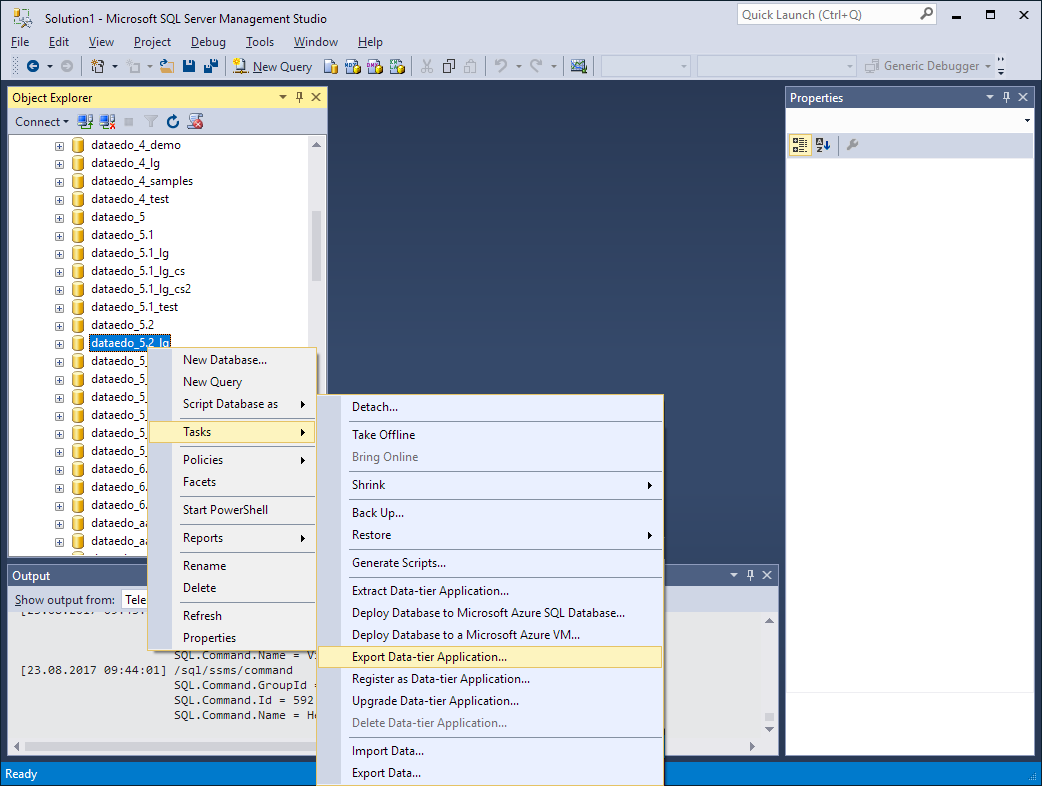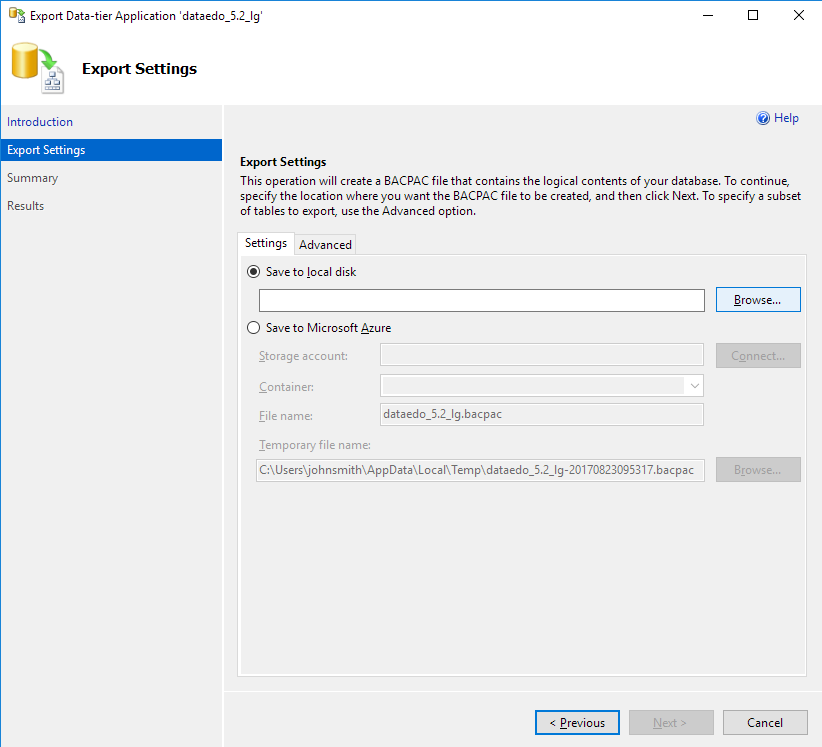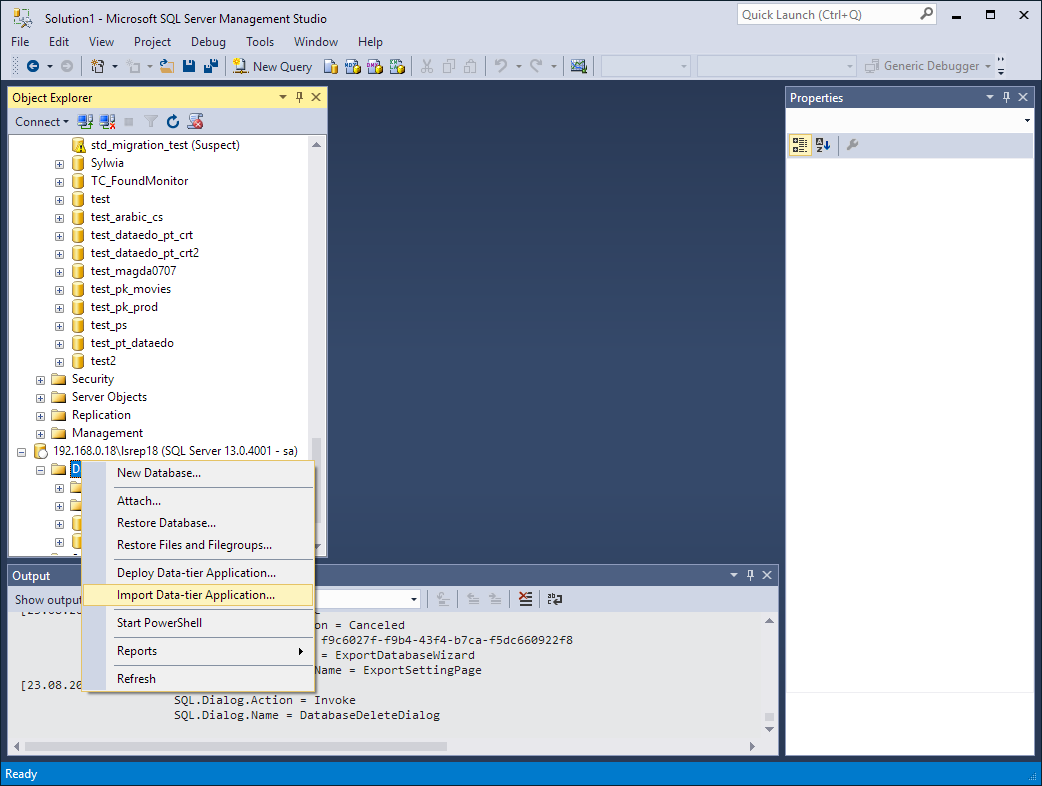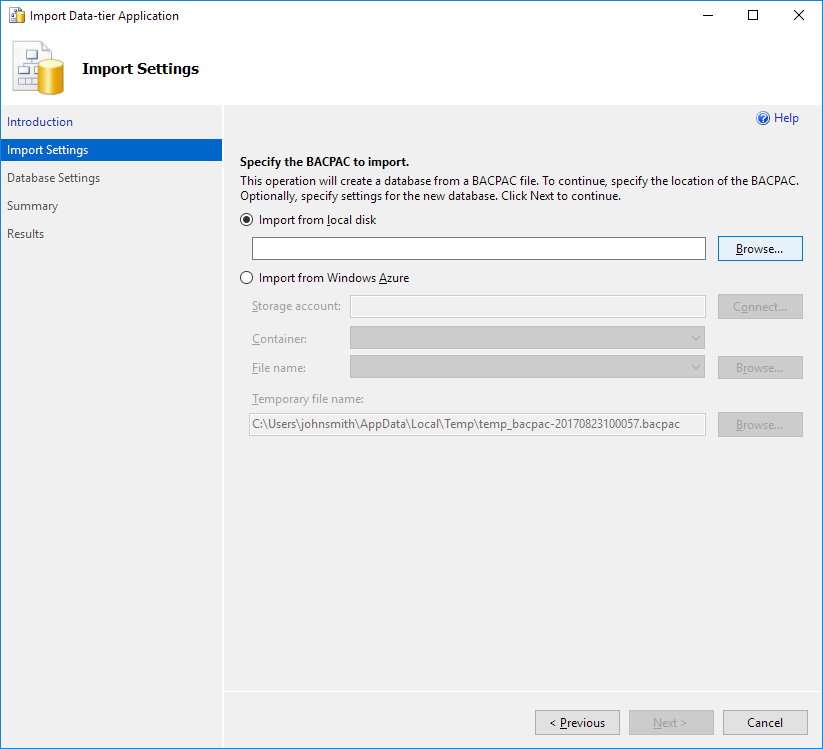The easiest way to move the Dataedo repository from one server instance to another would be to create a BACPAC file and import it.
Please note that this may not move user/license data, so you'll probably need to define users again through Dataedo Administration Console after the transfer.
Screenshots below are from SQL Severer Managment Studio 2016 - previous versions may look slightly different, so if you run into any issues, do contact us at [email protected]
- Log in to your SQL Server instance through Management Studio.
- In Object explorer, find and right click your repository database.

- From the context menu, choose Task > Export Data-tier Application...

- On the introduction screen, click Next.
- On the Export Settings screen, in the Settings tab, choose Save to local disk and click Browse... then specify location and name of the export file.

- Connect to the other server instance to which you want to transfer your repository.
- Right click the Databases folder.
- From the context menu, choose Task > Import Data-tier Application...

- On the Introduction page, click Next.
- On the Import settings screen, choose Import from local disk, and click Browse... and point to the file you've exported previously. Click Next.

- On Database Settings screen, in the New database name field specify the name of your new repository database.

- On Summary screen, click Finish.
- After a while, your database will be created.
- Connect to the new database with Dataedo Administration Console to recreate user and license information.
You should be ready to go now.










